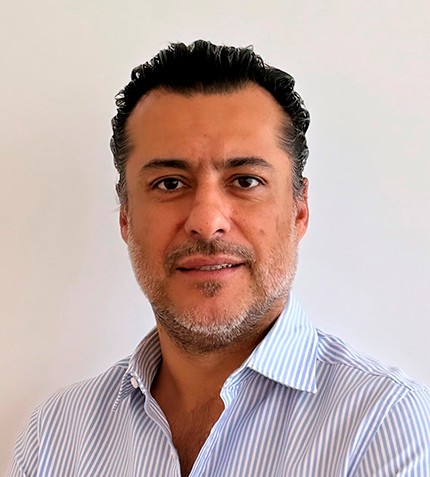
"Expediting the permitting process would help dramatically. Today, lots of projects are expansions or smaller projects, which take less time to bring to production through the permitting process."
Claudio Lesch
PRESIDENT SOUTH AMERICA, AUSENCO
How has demand changed over the past year?
We have experienced a steady demand over the past year. We started 2023 with a robust backlog and portfolio of mining projects in development. Ausenco has a strong presence in South America and in Chile in particular, with a Santiago office of about 1,000 employees.
One of our main projects is the EPC contract for the Mantoverde project, where we are entering the final year of execution. We plan to finalize construction during Q3, and then start commissioning the ramp-up process. The project is on schedule and is a priority during 2023.
Ausenco is also carrying out several key studies and engineering services for the main mining companies. Among them we can highlight the implementation of the Spence concentrator upgrade, and the recent award of a new contract for the study of a new copper concentrator plant at Escondida. We are also developing the detailed engineering for the surface works for Los Bronces underground of Anglo American, and we are pleased that the project was approved recently by the government. We also carry out many commissioning projects in the region and are currently providing commissioning services for Teck’s Quebrada Blanca and AMSA´s Inco projects in Chile. Ausenco has many service agreements with major companies, with a portfolio of approximately 30 projects in Chile at different stages of development.
What do your clients demand in this current environment?
The grade of metals is dropping significantly, and at the same time the demand for metals and battery metals required decarbonize the world is increasing. Therefore, our clients expect a new approach to projects, introducing new technologies to lower the carbon footprints of the mines and to increase the cost effectiveness of the projects. Ausenco has always been a new adopter of new technologies which help to reduce the energy and water consumption, change the way the process waste is disposed, decrease the footprint of the projects, and minimize the impact on the environment and local communities. We take those ideas and concepts into our studies to guide the project execution and commissioning. One of our differentiating factors is that we are a multi-service company, and our focus is 100% in mining.
How does Ausenco plan to take advantage of the lithium boom?
Five years ago, we put together a very strong team in lithium. Our goal is to continue to strengthen our lithium capabilities, particularly in Direct Lithium Extraction technologies.
Can you describe the current regulatory situation?
The approval of Los Bronces Undergound project was a very positive sign that the government is interested in promoting investment. Everybody in the industry recognizes the need to comply with environmental and community requirements. However, the complete permitting process is cumbersome, which is one of the reasons that projects take so long to mature. The world needs base metals and battery metals for the energy transition, and the gap is huge. Expediting the permitting process would help dramatically. Today, lots of projects are expansions or smaller projects, which take less time to bring to production through the permitting process.
How is Ausenco supporting its clients in water access and water management?
We are supporting our clients with the introduction of enhanced process technologies which reduce water consumption significantly, in addition to improving mineral recoveries and diminishing energy costs.
We are also supporting our clients in gaining access to seawater for their operations, instead of continental water. Our pipeline consulting group is a recognized world leader in the design of pipeline systems and has been involved in the development of the most relevant pipeline projects in Chile.
What is your focus on digitalization?
With the advent of autonomous fleets, automatic controls for process plants and infrastructure, and the availability of platforms and communications systems, a great deal of data is generated from operations. These data need to be collected, prioritized, transformed, and shared at different levels in the organization to improve the decision making and help to define the optimum operational strategy.
We are currently working together with some partners to develop algorithms to carry out data mining, simulate mining operations by using twin models for mines, plants, and processes, and use machine use learning techniques to turn data into information to enable us to forecast and improve operations.










